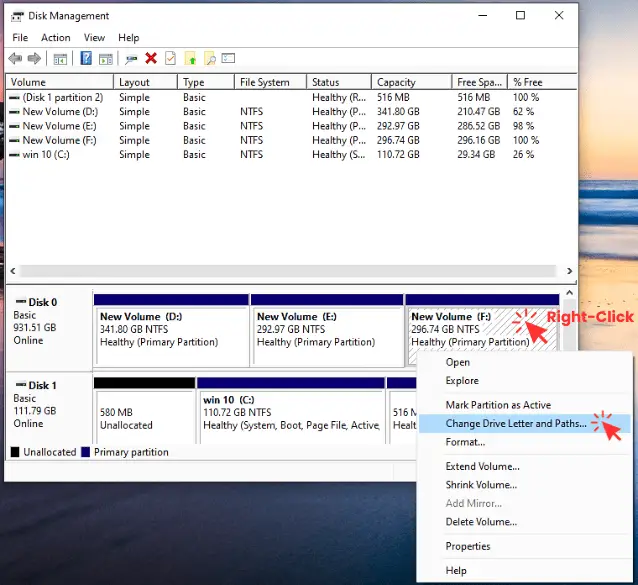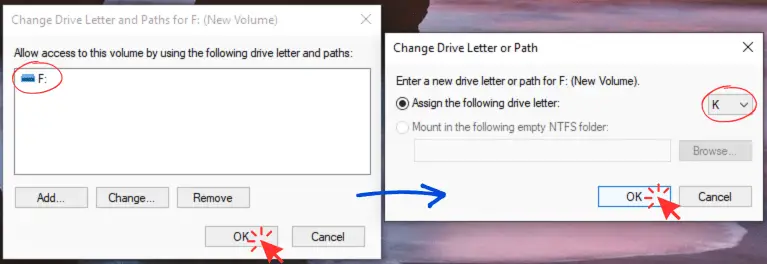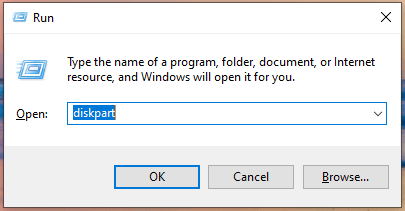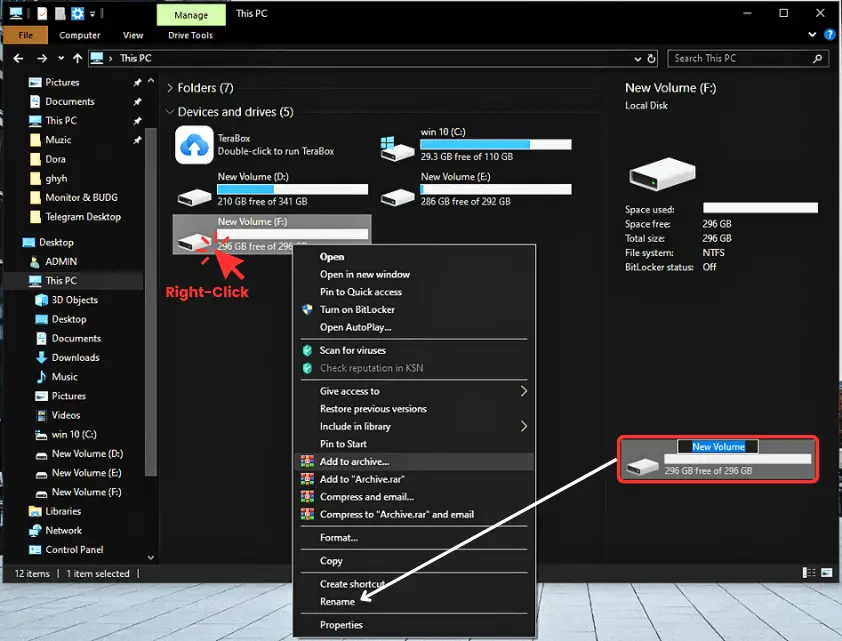How to Change Drive letter in Windows 10, 11? & its Name?
When you install a new hard disk drive on your computer or add a new external storage drive such as a USB flash drive or external hard drive, it is automatically assigned a letter by the Windows. However, there may be times when you need to change the drive letter or its name.
In this post, I show you how to change a drive letter in Windows 10 and 11 or any other system version. And yes, one can also change the volume name.
Common Reasons to Change drive letter and its Name
Many people choose to change the letter or the name of the disk drive because they want to keep the files organized. For example, if you have multiple storage in use, like and external drive for gaming or a USB drive for backup, you may want to label them in different letters to make it easier to identify which one is which.
Another reason could be due to conflicts with other drives. Sometimes, when a new drive is added, it may conflict with an existing one with the same letter labeled. In this case, changing the drive’s letter can resolve the issue.
Lastly, some people prefer to have their drives named according to their personal preference or for easier identification. For example, instead of having a generic “Local Disk (D:),” they may want to name it “Work Documents (D:).”
So, to customize manually, let’s begin with the steps of changing the drive/partition letter and name.
5 Steps to Change drive letter using Disk Management in Windows
It is essential to clarify that the drive letter change does not affect the system’s operation. We begin with accessing the tool, so:
- Open the list of options in the start menu by right-clicking on the icon and choose “Disk Management.”
- In the tool’s main window you can see a list of the units and below a representation of their partitions and space.
- You will have to right click on the graphical representation of the partition – the one that you want to modify the letter.

- Choose the option “Change drive letter and paths.” In the next window, click on “change“. Then you can give a new letter you want to the volume.

- Then click “OK,” and a dialog box will appear with “Some programs that rely on drive letters might not run correctly. Do you want to continue?” click “Yes” to continue if none of the programs are installed on the partition you are modifying.
If there are any installed programs on the drive, you must update the new drive letter in their program settings. However, any documents, files, and shortcuts on that drive will automatically be updated to the new drive letter.
Good to Know – You can manually change the letters of all internal and external drives except the system one where Windows is installed (i.e., the letter “C:\” should not be changed – the OS may stop booting or cause problems.
Change Drive letter in Windows using Command
Another method is through the DiskPart tool in command mode. One of the utility of this command is to change the letter of a storage unit. Let’s see how to do this:
To access it, press the “Windows + R” key to open the Run tool. Next, write in the text box “diskpart” and press Enter.

The command prompt will open with the prompt configured with the tool.
To change the letter, below are the 3 only essential commands that you have to copy and paste; then press Enter to execute them one by one.
- list volume (it shows us a list of all the volumes on the computer)
- select volume X (the volume letter that you want to change, e.g., in my case is “select volume F”)
- assign letter X (to allot a new letter to the drive; for example, in my case, is “assign letter K”)

Again, changing the letter of those volume drives where the system (Windows) is installed is not advisable.
Automatically, the letter of that drive will be changed, and you can check it from Windows Explorer itself. As I indicated previously, specific programs or applications whose operation depends on the drive letter or make reference to it in some settings could stop working correctly.
Change Drive Name in Windows using File Explorer
Apart from changing the drive letter, it is also possible to change the name of a hard drive or partition. This is particularly useful if you have multiple drives with similar names and want to avoid confusion. And what’s more, this is even simpler than the previous procedure:
- Open File Explorer by pressing your keyboard’s “Windows” and “E” keys.
- On the left side of the window, you should see a list with all your drives listed (or Expand the list if you don’t), click on “This PC” or “My Computer.” Here, Right-click on the drive whose name you want to change.
- From the context menu, select “Rename.”
- Type in the new name and press “Enter.”

Now, you should see the updated name for your drive.
FAQs
How can you change volume drive letters in Windows?
Windows’ built-in tool Disk Management allows you to modify disk drive letters in OS like Windows 11, 10, 8, and 7.
Can you rename C drive?
Technically, the letter of the system partition “C” can also be changed, but it is better not to do this. The fact is that the files of installed programs and system components are registered in the registry with reference to a letter, and after changing it, they won’t be able to work correctly.
Can I assign an 'A' or 'B' letter to the volume drive in Windows?
Assigning the letters A or B to a volume drive in Windows is possible. These letters are reserved specifically for floppy drives. If the PC has no floppy drives, you can also use letters A and B. The system will tell you which letters are available, ensuring you don’t assign the already occupied letter.
Why does Windows always label the letter C for the system but no other letter?
The operating system assigns letters sequentially. In the past, letters A and B were exclusively reserved for floppy drives and C for the operating system volume. Therefore, all new drives and partitions receive letters from D to Z.
Why take precautions before changing the drive letter of Volume?
Loss of information is common on drives that experience a path/letter changing. If you rename a drive letter associated with a program, it may not start. Creating a backup or downloading a program that allows recovery is advisable.
Using these two simple applications, you can change the letters of the drive in Windows 10 and even 11. And in no time, you can also change the drive’s name.
You will surely find these articles interesting:
- 7 Factors to Consider When Buying an External Hard Drive
- How to Find Out Password (Default) on a WiFi Router?
- Guide to Different Types of Mouse Pad Sizes » Small, Medium & Large Size
- How to Mute or Turn Off Microphone in Windows 10 and 11?
If you have any problems, let me know in the comments. I hope this article has been helpful to you.
